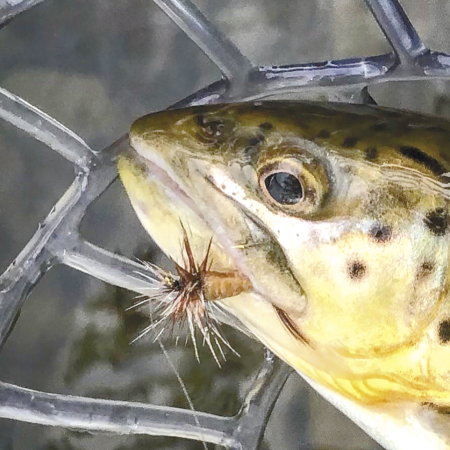Congratulations to all the teachers, kids, and administrators. This school year was definitely a challenge. I can’t begin to tell you how proud of you I am. Battling the unknowns and dealing with the COVID protocols wasn’t fun. But you found a way to persevere. Kudos and major props.
Special thanks to all of you who showed me some major love. Last week’s article went viral in the local golfing world. I enjoyed getting back on the links. I held my own and did the best I could. It was great to see everyone at WCC and Corey Creek. Both courses were in great shape. I do not know what lies ahead. I have not confirmed or signed up for any more gigs.
I have been on the water quite a bit. The fishing has been spectacular. I am still targeting trout. Most of the time, you can find me in the backyard on Lycoming Creek. I will continue to throw bugs for a few more weeks. Then I will make the switch to smallmouth bass. I have witnessed a number of hatches. It depends on the time of day, but I am seeing some successes. Bugs are everywhere. The Blue Winged Olives are hot in the morning. The Slate Drakes and a few Sulphurs are coming off in the evenings. Catching a fish on a dry fly is the ultimate feeling.
MATCHING THE HATCH is a phrase that is kicked around in the fishing world. The expression comes from a fly-fisherman’s attempt to imitate natural insects with flies to fool a fish. Since trout key in on certain items when they are available — and will often ignore others — getting familiar with the different types of bugs on the water will help you overall.
Cold-water streams are loaded with food in various stages of their life cycles, and you don’t need a Ph.D. in Entomology to figure out what most of them are. Simple tools and techniques can reveal this underwater world. Basic streamside sampling can help cut down some of the guesswork and give you a shortlist of viable offerings to try to replicate. But unfortunately, this is much easier said than done.
It is no secret that trout do the majority of their feeding subsurface; most literature agrees that it constitutes about 90% of their diet. To take advantage of this, many fly anglers use techniques to mimic aquatic insects in their larvae, pupae, or nymph stages. If you have ever seen flashes beaming from your favorite riffle, that could be a sign of trout rolling in and out of their lanes to feed on nymphs tumbling downstream. If you have ever noticed small boils just under the water’s surface, that could indicate trout taking emerging pupae or nymphs. Sometimes a trout will even totally submerge like a whale. Yes, a quick stream sample can fill you in on exactly what these trout are gorging on.
While learning what food options are available to trout can certainly give you a leg up, it does not guarantee them in your net. Even if you figure out what trout are fixated on, you still have to present your offering in a natural manner. Most anglers will admit that presentation most always trumps imitation. In some situations, there is so much food to be had that your imitation is a needle in a haystack. A slight modification to your pattern, like adding flash or a hot spot — a brightly colored bead or thread — can be all the difference in triggering a strike.
There are certain times when trout are in a feeding frenzy, and they will eat almost anything you throw at them. Then there are situations where fish are obviously gorging on something, yet you can’t buy a hit. Those are the instances where stream sampling can make the difference between a “skunk” and a successful trip. Plain and simple, brushing up on your entomology and taking stream samples can help make you a better trout fisherman. The next time you are on the stream, take a few minutes to see what’s on the menu.
Enjoy the summer, kids. You have earned it. Cheers.





Leave a Comment
Your email address will not be published. Required fields are marked with *